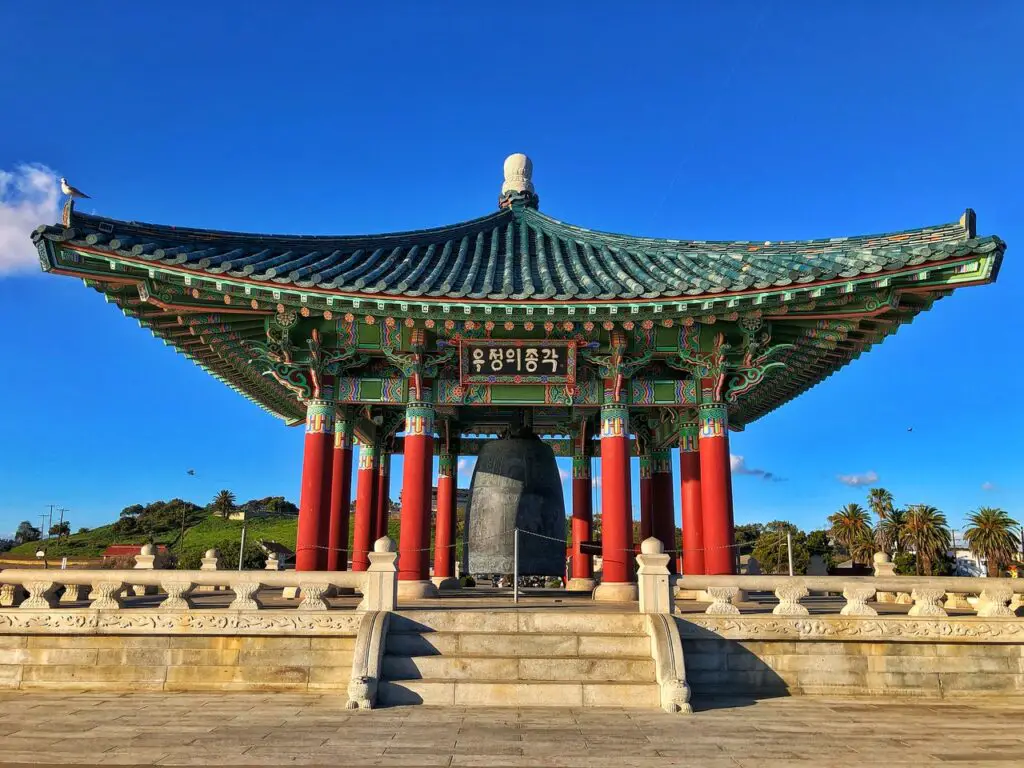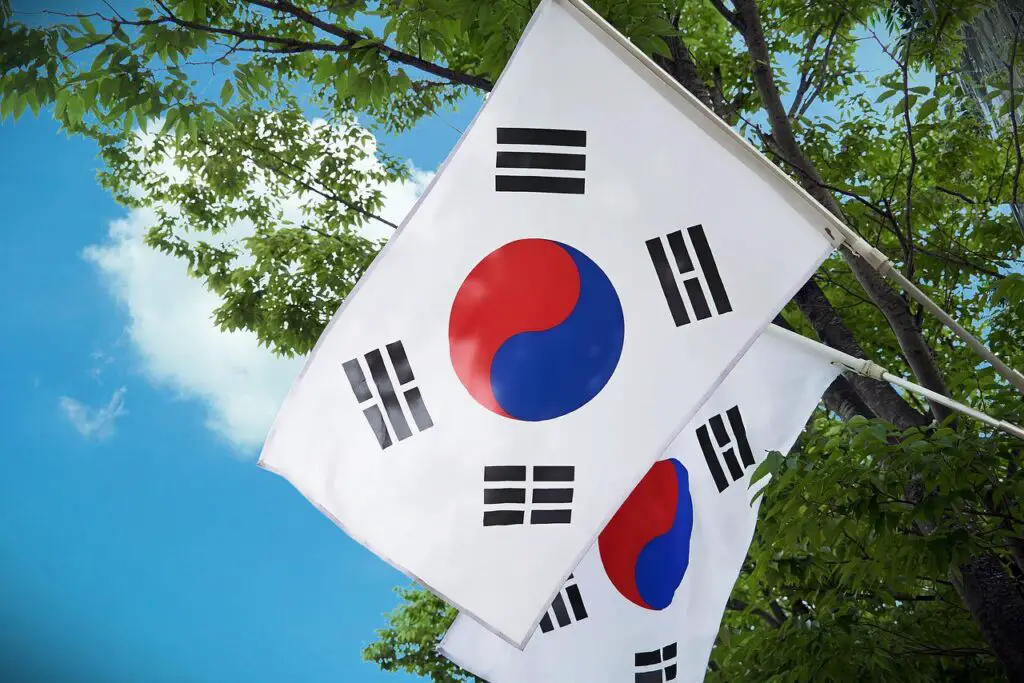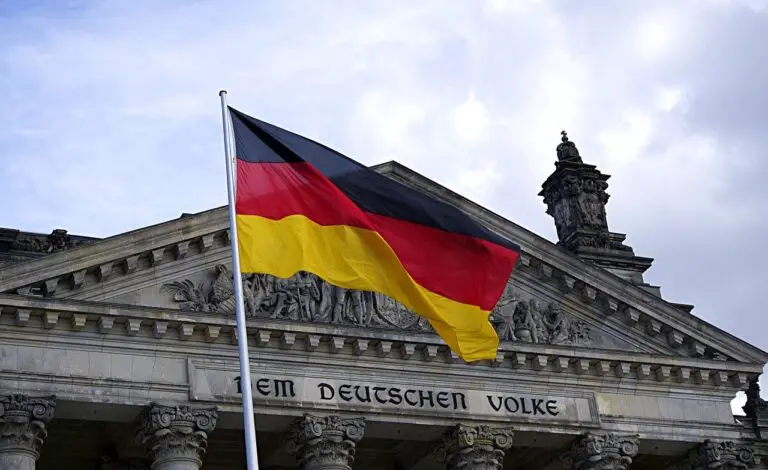South Korea is one of the top TEFL destinations in the world. Thousands flock there every year to enjoy the burgeoning, vibrant culture, and to take advantage of the fantastic earnings available to English teachers. But how much exactly can you make there?

In general, TEFL teachers in South Korea earn ₩1.9M-3M ($1,450-2,300) a month. The EPIK program and other similar government schemes are major employers, as are Hagwons (language academies). Private tutors can earn ₩25-50K ($20-40) per hour, but visa laws make tutoring illegal for many.
The country is set up well for TEFL teachers. Not only are there good salaries, but there are plenty of other perks and benefits which most employers provide, and big savings are definitely possible.
Searching for the perfect TEFL destination with the best earnings? Compare countries around the world with my free resource: How Much Do TEFL & TESL Teachers Make? Countries compared.
Options and earnings for TEFL teachers in South Korea
Opportunities for TEFL work in South Korea are abundant. The most popular ones are government-run public school programs like EPIK, GEPIK and SMOE and Hagwons (private language academies).
More experienced, qualified teachers may look to international schools and universities for long-term employment. There’s also private tutoring, although there can be legal difficulties in doing this.
| Earnings Source | Per Hour ($) | Hours Per Week | Per Month ($) | Annual Estimate ($) |
|---|---|---|---|---|
| International schools | 10-17 | 30-40 | 1,450-2,300 | 17K-28K |
| Government programs | 9-15 | 40 | 1,450-2,300 | 17K-28K |
| Hagwons | 9-13 | 35-45 | 1,500-2,000 | 18K-24K |
| Universities | 17-33 | 25-35 | 1,800-3,900 | 22K-48K |
| Private tutoring | 30-40 | 20-30 | 2,000-4,000 | 24K-48K |
If you’re comparing gross salaries with other countries in the region, South Korea doesn’t seem all that competitive. Wages are good, that’s for sure, but nothing spectacular.
But there’s more to the story. First of all, if you sign a 12 month contract, you get one month’s severance pay when it ends. That’s a huge bonus! Plus, most employers will pay for your airfare into the country, as well as accommodation while you work for them.
Having rent paid for you is game-changing. It cuts your cost of living nearly in half. With average living costs (excluding rent) at around ₩1.2M ($900), that means you’ll have a big chunk of salary left over for travel or savings.

One thing that may put you off TEFL teaching in South Korea is the amount of hours you’ll have to work. It’s quite intense.
School days run from 8 am to 4 pm, but may go on longer. Hagwons generally open after school/work, and have classes as late as 10 pm or even midnight. Expect long days with lots of teaching hours.
And if you’re into teaching because you want long holidays, South Korea isn’t ideal either. There are breaks in March and August, but at the start and end of each, many students go to school during optional half-days, meaning the actual holiday time is much shorter.
How much do TEFL teachers make in Hagwons (language academies) in South Korea?
Hagwons are a great source of employment for new and inexperienced TEFL teachers who want to make a good wage and learn the trade.
Typical Hagwon salaries range from ₩1.9M-2.6M ($1,500-2,000) per month. Working hours are quite long (think 35-45 hours a week, including preparation and planning time) and give an hourly rate of roughly ₩12-16K ($9-13).
To get a job in a Hagwon, you’ll need at least a 120-hour TEFL certificate, and any higher qualifications and experience will get you better paid positions.
If you’re looking for great value TEFL certificates, I recommend International TEFL and TESOL Training. Click the link for 15% off all courses (I receive compensation, so you’re supporting me, too). Not convinced? Read why I’d choose ITTT over other TEFL course providers.
Hagwons are private businesses. They operate after school and work, providing support to students who want to increase their grades and job prospects. Many South Koreans want to do this, so there are plenty of these schools across the country.
How much do TEFL teachers make in from government-run public school programs in South Korea?
EPIK (English Program in Korea) is the most famous government-run public school teaching program in South Korea. It places teachers in schools across the country, except in Seoul and the Gyeonggi Province.
GEPIK (Gyeonggi English Program in Korea), as the name would suggest, serves schools in the Gyeonggi Province, while the SMOE (Seoul Metropolitan Office of Education) is the program for teachers working in Seoul.

Government-run public school programs pay between ₩1.9M and ₩3M ($1,450-2,300) per month, depending on the program. EPIK pays ₩1.9-2.7M ($1,450-2,100), GEPIK offers ₩2-2.5M ($1,550-1,950) and SMOE salaries are ₩2-3M ($1,550-2,300).
If you’re starting one of these programs with little to no experience of TEFL, you’ll earn the lowest salary in the range. With more experience and qualifications, you can reach the top end of the bracket.
How much do TEFL teachers make in international schools in South Korea?
Unlike in many countries, international schools in South Korea don’t pay significantly better than public schools and language academies.
Typical international school salaries range from ₩1.9M to ₩3M ($1,450-2,300) per month, the same range as public schools.
However, to work in an international school, you’ll need a couple of years of experience and likely a teaching license or some serious credentials to get hired by the best institutions.
How much do TEFL teachers make in universities in South Korea?
The university teaching job is the best-paid form of employment and has the fewest hours per week.
Typical monthly wages for TEFL teachers at universities in South Korea are ₩2.3-5M ($2,000-4,000). With working hours between 25 and 35 a week, this gives an hourly rate of ₩19-24K ($17-33).
Not bad, right? But good luck in getting one of these jobs. You’ll have to be an experienced practitioner with hefty qualifications and a lot of experience to fend off the tough competition.
How much do TEFL teachers make from private classes in South Korea?
If you can do it legally, private tutoring is lucrative in South Korea. In fact, it offers the best hourly rate, and can compete with universities as the best overall paid job for TEFL teachers in the country. And the best thing is, you don’t need lots of qualifications to do it.
In general, hourly rates for private English tuition in South Korea range from ₩25-50K ($20-40).

There are two big problems with private tutoring, though.
First, it’s often illegal. Most TEFL teachers will have an E-2 visa as they’re employed by a South Korean company (or the government). With this visa, it’s illegal to give private classes. Many people do it anyway, but there’s always the risk of getting caught by the authorities and deported.
To do it legally, you need an F visa (residence). There are various different versions of the F visa, but they all have high demands, like investing a lot of money in a company in the country, or marrying a South Korean national.
The second problem is you don’t get the financial perks you’d expect from a Hagwon or government-run program. That means you have to pay for your rent and plane tickets. As a result, your living costs are higher, so the greater salary doesn’t go as far.
Conclusion
The jobs on offer in South Korea are attractive. Salaries can compete with almost every other country in the world (except for perhaps wealthy Middle Eastern states), and give plenty of perks.
If you love Korean culture, it’s a no-brainer. Get your TEFL certificate and start applying for jobs with the confidence that you’ll be able to earn plenty enough to live on and even save enough for some great travel, or to pay off student debt.
Why not head over to my resource: How Much Do TEFL & TESL Teachers Make? Countries compared to see what countries around the world can offer?








